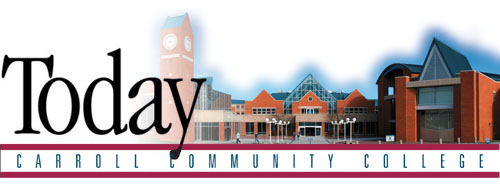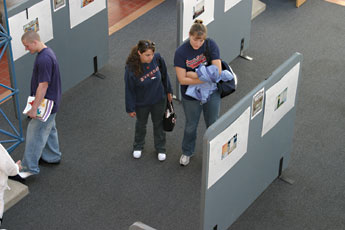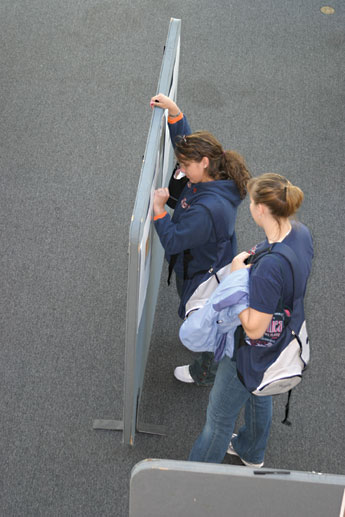
| Spring 2006, No. 24 |
|
Contents
Next Building Included in State Capital Budget “Picture This” Project Elicits Student Perceptions of Carroll Pictures from “Picture This” Project
|
|
“Picture This” Project Elicits Student Perceptions of Carroll
|
||
|
Inspired by a presentation by colleagues from Oakton Community College in Illinois, the college’s institutional research office conducted an innovative study of student perceptions of Carroll Community College this past year. Photography was used to capture and elicit student opinions of the college in a multi-stage research project, partly funded by the Maryland Association for Institutional Research. Students were given disposable cameras and told to take pictures of (1) things they liked about the college, (2) things they didn’t like about the college, (3) things that best represented Carroll Community College, and (4) things that should be changed. They were told to take pictures inside the buildings, outside on campus, and of people—with their permission. Three groups of students participated in the project: a freshmen Academic Skills class, a Computer Graphics class, and volunteers from a Student Government Organization Club Fair. A total of 30 student photographers submitted photographs for the study, which was conducted during fall 2004 and spring 2005.
Student perceptions were revealed in several ways in this study. The student photographers, by the choices they made in shooting the pictures, were expressing themselves in what researchers call reflexive photography. After the photos were developed, small group meetings with the photographers were held to discuss what the photos meant to the students in a process termed photo elicitation. Finally, 32 of the photos were mounted for a display in the Great Hall where the student body at large was invited to post written comments in response to the photos. The photographers took a total of 449 useable photos. Seventy-one, or 16 percent, were photos of people—students and staff. Pictures capturing campus atmosphere and facilities were also prevalent. Specific images that were submitted by multiple photographers included shots of the Great Hall, parking lot, the Admissions and Advising Office, the Scott Center and theater, the bookstore, the front quad, and campus foliage. New students were more likely to take pictures relating to campus atmosphere, while continuing students more often took pictures of people and campus services. The meaning of many of the photos was straightforward. Students took pictures of the recycling bins and ATM machine because they approved of and used them. Pictures of the trees and plants inside the buildings expressed appreciation for how the foliage added to the atmosphere. Photos of the upholstered chairs scattered throughout the buildings were meant to applaud the readily available, comfortable seating for between-class relaxing. Photos of the “blue-light” security call boxes in the parking lots and automated external defibrillators in campus buildings were taken to express appreciation for the college’s concerns about the personal safety of students, staff, and visitors. The photographs occasionally revealed unexpected comments. A photo of the locker room in the fitness center was taken to request general purpose lockers for student use while on campus. A photo looking down into the Great Hall from the balcony was taken to show dust on top of the lamps (they were subsequently cleaned). Photos of PCs in the computer labs were taken to encourage purchase of Macs for the CGR lab. A picture of the clock tower expressed appreciation for the architecture but dismay that the clock was not on all four sides. Photos of the parking lot revealed complaints about overcrowding and distance (as expected) but also anger that employees occasionally park in student spaces. Bookstore photos conveyed concerns about costs (as expected) but also the desire for more evening and weekend hours—especially at the beginning of the semester.
Students sometimes got creative and staged photographs. A pile of dollar bills was photographed to convey the good value offered by Carroll’s relatively low tuition. A picture of a DVD entitled “Endless Highway” was intended by the photographer to suggest that attending Carroll was an adventure offering endless opportunities, although other students said it meant lifelong learning or the feeling that you would never leave Carroll! A selection of student photographs is reproduced here with their associated comments so readers can get a better feel for what was learned from the “Picture This” project. |
||

